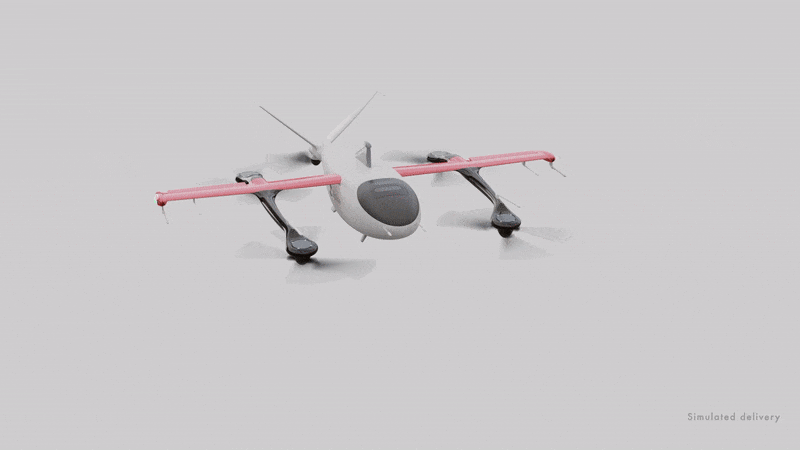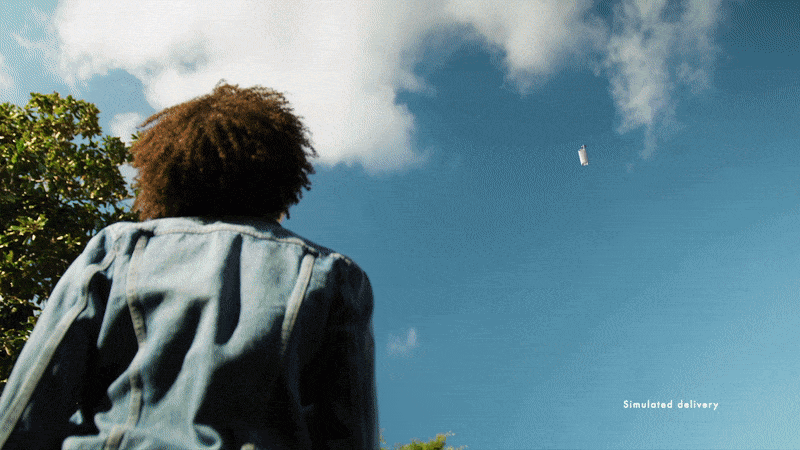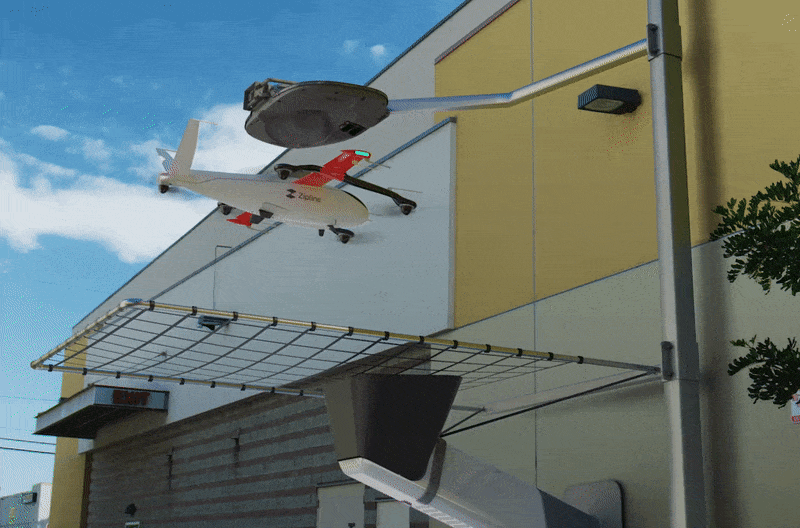Zipline Adds Rappelling Droid to Delivery Drones

This morning, drone-delivery company Zipline announced a new drone-delivery system offering nearly silent, precise delivery that's intended to expand the company's capabilities into home delivery. This requires a much different approach from what Zipline has been doing for the past eight years. In order to make home deliveries that are quiet and precise, Zipline has developed a creative new combination of hybrid drones, droids," and all the supporting hardware necessary to make deliveries directly to your front porch.
We visited one of Zipline's distribution centers in Rwanda a few years ago to see how effective their system was at delivering blood across the country's rugged terrain. To watch a delivery take place, we drove an hour over winding dirt roads to a rural hospital. Shortly after we arrived, a drone made the trip and delivered a package of blood in about 14 minutes. It was a compelling example of the value of drone delivery in situations where you have critical and time-sensitive goods in areas of low infrastructure, but the challenges of urban home delivery are something else entirely.
The way that Zipline's current generation of fixed-wing delivery drones work is by dropping boxes tethered to small parachutes while flying several tens of meters over an open delivery area. You need some obstacle-free space for this to work reliably (say, a handful of empty parking spaces or the equivalent), and it's not a particularly gentle process, meaning that there are some constraints on what you can deliver and how it's packaged. For hospitals and health centers, this is usually no problem. For your home, it very well may not be an option at all.
Zipline's new drones are much different. In a heavily produced online event featuring the Zipline team alongside Rwandan president Paul Kagame and company board member Bono, Zipline introduced P2, a new delivery system that combines a hybrid fixed-wing drone with a small tethered droid that can drop out of the belly of the drone to make precision deliveries.

Housed within the P2 Zip, the droid and whatever it's carrying can travel at 112 kilometers per hour through all kinds of weather out to a service radius of about 16 km with an impressive 2.5- to 3.5-kilogram payload. Once the P2 reaches its delivery destination, the Zip hovers at a few hundred feet while an integrated winch lowers the droid and the package down to the ground. The Zip remains at a height that is both safe and quiet while the droid uses integrated thrusters to accurately position itself over the delivery zone, which at just half a meter across could easily be the top of a picnic table. Visual sensors on the droid make sure that the delivery zone is clear. As soon as it touches down, the droid drops its cargo out of its belly. Then it gets winched back up into the Zip, and the team heads back home.

On the other end of things, there's an integrated loading system where the P2 Zips can be charging outdoors (using an interesting overhead charging system) while the droids drop down a chute to be loaded indoors one by one.
